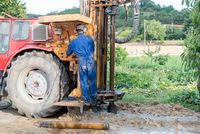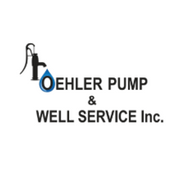Can Water Well Drilling Disrupt Underground Utilities?

 A well on your property means having a constant water supply. During drought season, you’re spared from watering restrictions, unlike homes that depend on the public water system. To tap into your groundwater source, water well drilling has to be done. This can be a risky undertaking, not to mention costly, if approached haphazardly. Here’s what you need to know about this process and how it can impact underground utilities on your property.
A well on your property means having a constant water supply. During drought season, you’re spared from watering restrictions, unlike homes that depend on the public water system. To tap into your groundwater source, water well drilling has to be done. This can be a risky undertaking, not to mention costly, if approached haphazardly. Here’s what you need to know about this process and how it can impact underground utilities on your property.
What Happens During Water Well Drilling?
Water well installation entails boring a hole into the ground, far enough to reach an aquifer that contains groundwater. This is usually replenished by rainwater seeping through the soil. Because wells are commonly more than 10 to 30 feet in depth, or even deeper sometimes, water well drilling requires the use of heavy machinery. While there is no hard and fast rule regarding well depths, drillers prefer to dig deep for better water quality. This way, your supply will have fewer minerals and iron and be clearer.
How Can You Prepare for It?
To avoid inadvertently damaging underground utilities, including gas or power lines, drillers must contact the proper authorities at least 48 hours prior to digging so nearby utility lines can be accurately marked. These markings are mere estimations of the exact location, but to be safe, the contractor can drill test holes to check the specific site.
You can avoid making costly, damaging mistakes by hiring professionals. For reliable water well drilling services, turn to Oehler Pump & Well Service Inc. in Charlotte, NC. Since 1970, they have been offering quality services to provide fresh, clean water to customers in Charlotte and the surrounding areas. Call (704) 875-2209 or visit their website to learn more about drilling and water treatment.
About the Business
Have a question? Ask the experts!
Send your question

